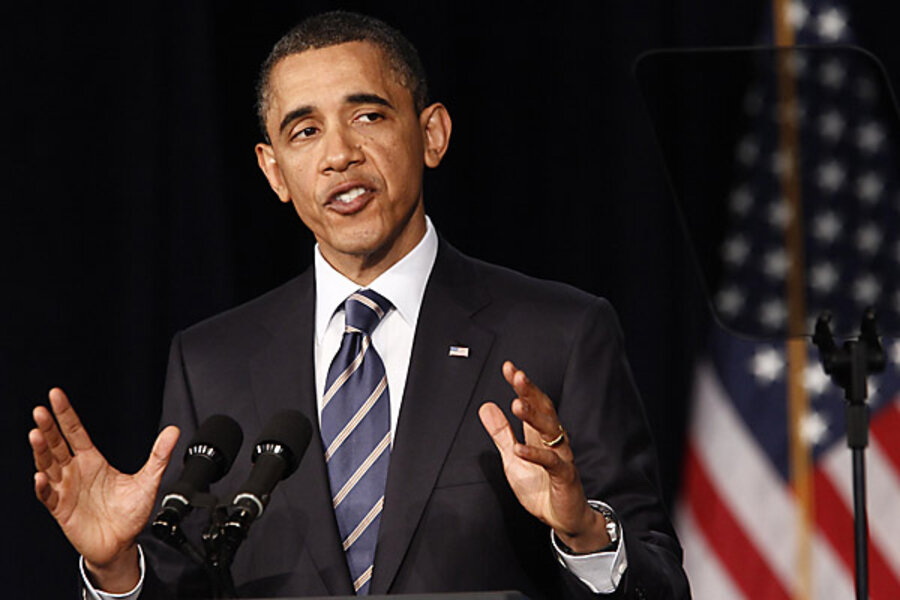Obama, Ryan, and the massive chasm that divides them
Loading...
Imagine for a moment you walk into a dealership to buy the vehicle of your dreams. The salesman asks what you want to pay. You say $50. He counters with $50,000. The good news is you have begun a negotiation. The bad news is, you’ve got a lot of talking to do before you can drive that honey off the lot.
Thanks to President Obama’s speech this afternoon, we have a pretty good idea of the parameters of what promises to be an historic fiscal debate. Yet, like our friends at the car dealer, a chasm separates the two sides. This is a battle that is likely to continue beyond the 2012 elections and the offers will constantly shift. But at least we know where everyone is starting.
In a sense, Obama has given us the high water mark for government spending going forward, and Ryan has provided the floor for tax revenues. Interestingly, the middle-gound may well end up being something like the plan offered by the chairs of Obama’s fiscal commission, Erskine Bowles and Alan Simpson.
But unlike most budget debates, more than dollars are at stake. As Obama himself noted today, this fiscal confrontation represents a profound disagreement about the nature of government. With that in mind, here are the opening bids on the big issues.
Taxes: Obama actually moved from past positions in a couple of key areas. For the first time in a major budget speech, he said nothing about never, ever raising taxes on people making less than $250,000. Walking back this ill-advised campaign promise is a necessary first step for him. He also seems to have backed away from his interest in addressing corporate tax reform separately from individual reform. Now, Obama wisely vows to do both by lowering rates and trimming (unidentified) tax preferences, both goals also supported by the GOP.
The critical difference, of course, is that Obama would use tax reform to raise taxes by about $1.3 trillion over 12 years. By contrast, in what has to be a classic only-in-Washington moment, Ryan opened his deficit reduction plan by proposing to cut taxes for the highest-income families and corporations, thus adding $2.9 trillion to the deficit over 10 years.
Medicare: Obama vows to maintain the existing government-run Medicare program, although he promises to run it more efficiently. His goal; Reduce projected Medicare costs by an additional $500 billion by 2023 by cutting overall health costs. The main mechanism: strengthening an independent panel that would reduce Medicare payments for ineffective care. When Obama included this commission in the 2010 health law, some in the GOP derided it as a “death panel.” Rather than fine-tuning Medicare, the House Republicans would replace the program with private insurance subsidized by government vouchers.
Medicaid: The House GOP would reduce planned Medicaid spending by almost $800 billion by capping the federal contribution to this joint state/federal program that provides health care for poor families as well as long-term care services for the disabled and the frail elderly. The Republican plan would also grant states maximum flexibility in running the program. Obama opposes the cap and would retain existing cost-sharing, but he’d reduce projected federal spending on the program by $100 billion.
Overall deficit reduction: Obama would reduce the deficit (including interest payments) by $4 trillion over 12 years. One-third would come from taxes, one-third from spending, and one-third from interest. The House GOP would cut the projected deficit by about $6 trillion–$5.5 trillion from spending, $500 billion from interest. Less than nothing from taxes, which he’s cutting.
Based on where Obama and the House Republicans are today, this will be a long and arduous negotiation. But at least they’ve started to talk.
Add/view comments on this post.
--------------------------
The Christian Science Monitor has assembled a diverse group of the best economy-related bloggers out there. Our guest bloggers are not employed or directed by the Monitor and the views expressed are the bloggers' own, as is responsibility for the content of their blogs. To contact us about a blogger, click here. To add or view a comment on a guest blog, please go to the blogger's own site by clicking on the link above.





